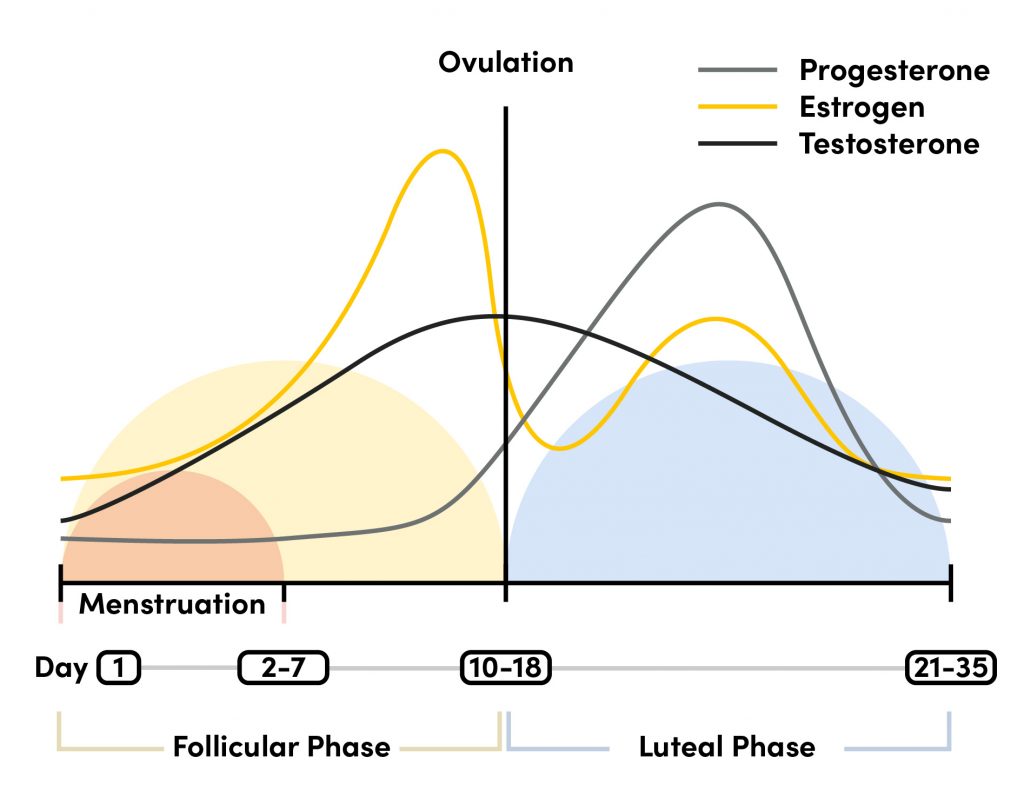Should Climbers Train Endurance in the High-Hormone Phase?
Something we are seeing more and more is the headline: ‘focus on training endurance in the high-hormone phase’. But why is this, and what does this mean for climbers?
There is a growing body of information out there concerning the high- and low-hormone phases, and the types of exercise that might be better aligned with our physiology during these times.

The follicular phase (menstruation until ovulation) is known as the low-hormone phase as the levels of progesterone and estrogen (and other hormones) are lower.
The luteal phase (ovulation until menstruation) is known as the high-hormone phase as both estrogen and progesterone levels are higher.
Read more about the phases of the menstrual cycle and the potential effect on your training.
What changes in the high-hormone phase?
During the luteal phase, both estrogen and progesterone are high, and this has an effect on substrate metabolism (the source of fuel we burn in order to produce energy in the form of ATP).
When hormones are high, our cells conserve glycogen (the stored form of glucose) and burn fats more readily during exercise: a state that has been termed ‘glycogen sparing’. The fact that we burn fats more readily during exercise in the high-hormone phase, and that fats are used by the aerobic energy system, has led to the theory that performance in endurance exercise may be enhanced during the luteal phase.
(We should note that, although the change in substrate metabolism has been shown, there is no conclusive evidence of its effect on performance. This is simply a theory.)
Should climbers train endurance in the high-hormone phase?
The aerobic energy system can use fats as fuel (as well as proteins and carbohydrates).
The anaerobic energy system cannot use fats as fuel, only glucose (carbohydrate).
So, the first thing to consider is:
Which energy system do we use whilst climbing?
The aerobic energy system is a relatively slow system when it comes to producing ATP. Lower-intensity sustained cardiovascular exercises, like walking, cycling, long runs, utilise the aerobic energy system. These activities are very different to climbing.
When we do high-intensity exercise, like weight training and HIIT, we tend to rely on our anaerobic energy system which produces energy much faster. However, this system cannot use fats as an energy source.
Therefore, let’s consider…
Whilst we may experience a change in substrate metabolism during the luteal phase, as climbers who tend to utilise the anaerobic energy system, to what degree do we benefit from the enhanced aerobic energy system? (If this theory is indeed correct!)
For route climbers, training endurance in the high-hormone phase (the luteal phase) may be beneficial – focusing on lower-intensity endurance sessions.
However, for anaerobic or aerobic strength and power training, the key takeaway from this theory is: fuel well with carbohydrates before sessions to help with glucose availability for anaerobic respiration.
Follow Coach Maddy on Instagram.





